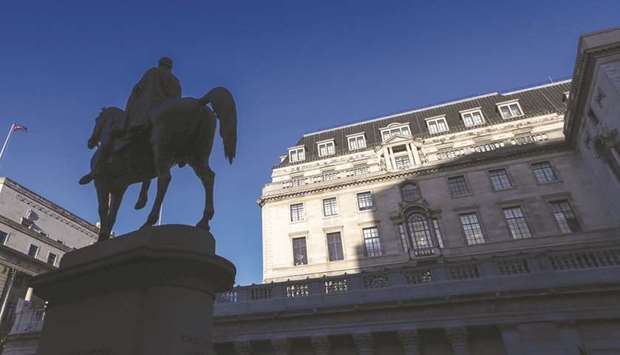Mark Carney’s last monetary policy decision as Bank of England governor could prove to be dramatic.
Comments from policy makers in the last week have surprised markets and economists, showing that the central bank’s choice is more finely balanced than previously expected.
The decision will be announced on January 30, when officials will also publish fresh forecasts on growth and inflation. The BoE’s annual review of the supply side of the economy will also be included in the Monetary Policy Report, which will include crucial analysis on the extent of the supply shock from the UK’s departure from the European Union.
Ahead of the final meeting before Andrew Bailey takes over in March, here’s where the debate stands:
The BoE’s nine policy makers set the benchmark rate by majority vote. Michael Saunders and Jonathan Haskel have called for a reduction since November, so they only need three more to join them to sway the decision.
They might get it. In the past week, Silvana Tenreyro said she may support a rate cut in the next few months if uncertainty around future trade arrangements or sluggish global growth continue to weigh on the economy. Gertjan Vlieghe made an even more urgent case in a Financial Times interview published at the weekend, saying he’d need to see a significant improvement in the data to justify waiting any longer before voting to cut.
The key voter is probably Carney — and he indicated last week that he sympathizes with the rationale for more stimulus.
The remaining four MPC members — Ben Broadbent, Jon Cunliffe, Dave Ramsden, and Andy Haldane — all voted in December to keep policy unchanged and haven’t given any recent public remarks.
The economy shrank ahead of the general election, figures published on Monday showed. And while surveys taken after the vote suggest Boris Johnson’s emphatic victory delivered a boost to confidence, that momentum may not last. Cracks are starting to appear among consumers, a mainstay of UK economic growth, with retail sales posting their worst year on record. Inflation is also below the BoE’s 2% target, and economists see it staying under the threshold when new figures are published this week.
There’s plenty more data to come that could still convince officials to keep rates on hold for now. Figures on retail sales are due this week and PMI surveys published closer to the end of the month will also be crucial in informing the debate.
In a December speech explaining his vote for a cut, Haskel said that with little room for looser policy, it was better to act sooner rather than later to “reduce the probability of the economy of getting stuck at the effective lower bound.” That worry is one possible explanation for why the MPC has turned impatient so quickly, according to JPMorgan Chase & Co economist Allan Monks.
Brexit is set to happen at the end of the month, but many doubt Johnson can deliver on his pledge to strike a trade deal with the bloc by the end of the year. If he fails, Britain will once again be facing a disruptive cliff-edge departure.
UK companies have had a difficult time since the 2016 referendum, wasting resources on stockpiling and contingency planning in anticipation of deadlines that have come and gone, and withholding investment as a result. The way firms react to the next phases of the divorce process — and what opportunities they’ll have to maintain business with the country’s biggest trading partner — will be crucial in deciding the UK’s economic fate.
The performance of the rest of the world is especially important for an open economy like the UK, and tensions beyond the Brexit debate look set to persist into 2020. While the US and China plan to sign the first phase of a trade deal this week, that’s unlikely to lead to any upswing in global growth. The flare-up between the US and Iran could also weigh on sentiment.

A view of the Bank of England in the City of London. Comments from policy makers in the last week have surprised markets and economists, showing that the central bank’s choice is more finely balanced than previously expected.


